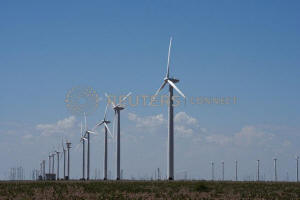For best climate impact, put renewables in the U.S. Midwest: study
 Send a link to a friend
Send a link to a friend
[October 29, 2019]
By Nichola Groom
(Reuters) - Installing wind turbines and
solar panels in the U.S. Midwest instead of other parts of the country
would deliver the biggest cuts in climate-warming emissions and
improvements in public health, according to a study published on
Tuesday.
The magnitude of benefit from renewable energy depends in part on
whether it is displacing coal-fired power plants or cleaner-burning
fuels like natural gas, according to the study by researchers at the
Harvard T.H. Chan School of Public Health and Carnegie Mellon
University.
The size of the population and its proximity to power plants also matter
when calculating the cost benefits of expanding clean energy, because of
the impact on public health to removing pollution from the air, the
study found.
The study found that a megawatt hour (Mwh) of wind-powered electricity
installed in the Upper Midwest achieves about $113 worth of benefits
compared with $28 per Mwh in California, which already boasts large
amounts of renewables and gas. The values were similar for other
renewable fuel sources, like solar.
"There's a lot of coal there and there's a lot of people who live in the
region and downwind of the region," said Jonathan Buonocore, one of the
study's authors, noting that some Midwest pollution travels to
populations on the East Coast.
The study divided the nation into 10 regions, and the benefits of
installing renewable energy were largest in the Upper Midwest, Great
Lakes and Lower Midwest. The benefits were lowest in California, the
Southwest and the Rocky Mountains.
[to top of second column]
|

Wind turbines generate power at the Loraine Windpark Project in
Loraine, Texas U.S. August 24, 2018. Picture taken August 24, 2018.
REUTERS/Nick Oxford/File Photo

Both the social cost of carbon - a measurement of the economic harm
caused by carbon dioxide through its climate and other impacts - and
lower mortality rates were factored into the cost benefit analyses,
the study said.
The study did not include the impact of fugitive methane emissions
from the natural gas supply chain, Buonocore said. Methane is a
greenhouse gas more potent than carbon dioxide.
Carbon capture and sequestration technology on coal plants is about
as cost-effective as renewable energy for reducing carbon emissions
but less effective at yielding health benefits in most regions, the
study found.
(Reporting by Nichola Groom; Editing by Cynthia Osterman)
[© 2019 Thomson Reuters. All rights
reserved.]
Copyright 2019 Reuters. All rights reserved. This material may not be published,
broadcast, rewritten or redistributed.
Thompson Reuters is solely responsible for this content. |